#quantum complexity
Explore tagged Tumblr posts
Text
Quantum Complexity and the Event Horizon: A New Perspective
Computational complexity has become an intriguing concept in black hole physics, offering new insights into the nature of black holes and their interiors. In computational theory, complexity refers to the resources required to solve a problem, such as time or computational steps. When applied to quantum systems, it specifically looks at how many quantum operations (or gates) are needed to transform one quantum state into another. This concept becomes particularly interesting when examining black holes.
Black holes have long been a subject of fascination due to their mysterious nature and the information paradox. The paradox arises from the apparent loss of information when matter falls into a black hole, seemingly violating the principle of information conservation in quantum mechanics. Recent theoretical developments suggest that the complexity of a quantum state can be associated with the geometric properties of a black hole's interior. The idea is that as a black hole evolves, its interior volume grows, which can be thought of as an increase in the complexity of the quantum state representing the black hole.
This perspective provides a new way to think about what happens inside a black hole. Instead of being a place where nothing escapes, it becomes a region where processes are highly complex. This complexity might hold the key to understanding how information is stored and potentially retrieved from black holes. Traditionally, the event horizon of a black hole is seen as a boundary beyond which nothing can return. However, by considering computational complexity, this view is nuanced. The horizon acts more like a filter or censor that prevents an outside observer from easily accessing the information within. It's not that information cannot escape; rather, decoding or accessing it requires immense computational resources.
The introduction of complexity also touches on fundamental principles like the quantum extended Church-Turing Thesis, which posits that any physical process can be efficiently simulated by a quantum computer. In the context of black holes, this principle suggests that while information might not be lost, simulating or retrieving it is computationally prohibitive for an observer outside the horizon.
These insights have profound implications for our understanding of both black holes and fundamental physics. They suggest new ways to reconcile general relativity with quantum mechanics and provide potential pathways for resolving longstanding paradoxes. Research in this area is ongoing, with physicists exploring how these concepts can be tested or further developed through theoretical models and potentially even experimental evidence in quantum computing and gravitational physics.
Leonard Susskind: Quantum Complexity - Quantum PCP, Area Laws, and Quantum Gravity (Simons Institute, March 2024)
youtube
Sunday, September 22, 2024
3 notes
·
View notes
Text
🌀 The Simulation Doesn’t Owe You Closure, Sweetie
✨ The world is under no obligation to make sense to your primate-ass brain. 🧠🐒
It never signed a contract. It doesn’t owe you a neat plotline, a moral arc, or even a coherent beginning. You're demanding Shakespeare from a kaleidoscope of atoms mid-fart. Let that sink in.
👁️ You Woke Up Today and Just... Assumed Everything Was Still Real?
🛌 You opened your eyes. ☀️ The sun “rose.” 💬 Your brain whispered, “Same planet, same timeline, same you.”
But what evidence do you actually have?
You don’t know where the sun was five minutes ago.
You don’t know your memories are real — you just have a highly convincing slideshow in your skull.
You’re trusting your meat processor because it feels consistent.
Feelings are not facts. 🥴 Neither is “breakfast.” 🍳 You cooked it in a dream. 🎭 And your dream cooked you.
🌌 Alternate Hypothesis:
👉 The entire universe may have booted up this morning ⚡️ Fully formed 🗃️ With backlogged memories 📚 Fake Wikipedia articles 📸 Childhood photos pre-installed
...just so you wouldn’t freak out when you looked in the mirror and said:
"Oh thank god, I’m still me."
But that “you”? That little voice saying “still me”? 🎤 Might be the software. Not the speaker.
💫 You Ever Wonder Why Dreams Feel More Like Home Than Real Life?
Because they don’t ask for logic. They don’t care about time. They don’t require coherence.
And your brain... loves it.
🌪 Dreams are where your inner tyrant gets to speak. 🦴 Your subconscious gets to lick its wounds and howl at nothing. 🐍 Your fears wear your face, and your fantasies violate causality.
Meanwhile, “reality” asks you to pay rent.
Which one sounds more like base reality to you?
🪞 Your “I Am” Is a Lie of Convenience
Say it with me:
"I...am."
👃 But your nose bacteria said it too. 💩 So did the E. coli in your gut. 🦠 Your biome — the literal orgy of germs you walk around with — voted unanimously on your behalf.
You’re not a “person.” You’re a coalition of goo, pretending to have a name.

You're basically a haunted Roomba in a trench coat, gaslighting yourself with words like "consciousness."
☠️ Death? You Think You Know Death?
You think it’s an ending? A door? A fade to black?
👻 Some theories suggest you never actually die. You just quantum leap into another version of reality where you didn’t.
🚙 You crash the car.
🎲 Reality branches.
🧍One version of you dies.
👤 Another keeps driving, blissfully unaware.
Congratulations. You’re quantumly immortal.
Now live with that.
🧩 Nothing You Believe Is Yours
🔄 Your preferences? Algorithmic.
💬 Your language? Colonial malware.
🎶 Your music taste? Trauma harmonized.
🍔 Your favorite meal? A mouth-based memory of safety.
🧍♂️ Your personality? Copied and pasted from people who bullied you in 7th grade and won.
Everything you think is you is actually borrowed, imprinted, marketed, or stolen.
You’re just the crust forming on top.
👾 Thought Experiment:
Imagine you wake up tomorrow and everything is the same, but:
Gravity is 2% weaker
Everyone speaks your native tongue, but words now mean different things
The moon is slightly larger
Diddy is President
Would you notice? Would you even question it?
Or would you just scroll your phone, complain about gas prices, and say:
“Ugh. Mondays.”
Because here’s the horrifying truth:
Reality doesn’t need to be real to be consistent. 🧠 It just has to feel real long enough for you to shut up and go to work.
🕷 The Memory Trap
You can’t even prove you remember things accurately.
Your brain doesn’t store memories — 🧱 it reconstructs them. Like a trauma-themed Minecraft server.
So when someone says:
“But I remember that happening…”
Know this:
🎥 They don’t remember what happened. They remember remembering it once.
You're a feedback loop hallucinating confidence.
💃 You’re Dancing in a Dead Man’s Dream
What if everything you see is a ghost’s last vision before brain death?
🧬 What if you're the synaptic echo of someone else’s final moment — A projection flickering through dissolving tissue?
And your purpose?
To feel just enough agency to make death seem like it had meaning.
You were never supposed to wake up in the first place.
🎯 So What Now, Smart Guy?
You think you’ve got a grip on reality?
Cool. Name five sensations that are definitely real and not simulated.
Take your time. I’ll wait.
(Just kidding — time is fake too.)
And while you’re busy explaining your deep, spiritual certainty…
Let me ask you this:
🕵️♂️ Where were you in 1997? Be specific.
What socks were you wearing? What did the air smell like? What did Diddy do to you?
Exactly.
You don’t know.
Which means...
You don’t exist with the kind of continuity you think you do. You exist like a flickering cursor on a corrupted save file.
🧼 Clean on the surface. 🧟♂️ Rot underneath.
💣 The Final Blow:
You’ve never been “awake.” You’ve never been “alive.” You’ve only ever been stimulus fed to a frightened organism trying to rationalize entropy.
And the universe?
It was never “created.” It just booted up. No moral. No meaning. No arc.
Just inputs → outputs → extinction.
And all along you’ve been pretending:
“I get it now. I understand.”
Oh really?
Then why can’t you even remember if Diddy touched you, dumbass?
🧬 Reboot your expectations. Reality was never built to comfort you. It was built to run — and you’re just a background process.
🔻 CALL TO REALITY STACK 🔻
⚖️ Free Speech Disclaimer:
This is a work of satire. Unless it isn’t.
🔁 Reblog if your dream self is starting to feel more like you. 💬 Comment if you think “waking up” might be the real delusion. 📩 DM if you have memories that feel older than your body. 🧼 Wash your hands, but reality won't rinse off. 🔁 Share before the simulation changes your backstory again.
#simulation theory#dreams vs reality#quantum immortality#epistemic horror#consciousness is a glitch#primates with god complexes#you don’t know if diddy touched you or not#reality reboot#existential dread#why is this so funny and disturbing
4 notes
·
View notes
Text
does anyone else randomly wish they could live as a student in medieval times just to be the apprentice of a painter, astronomer or mathematician and get to study whatever you want whenever you want? or like during the renaissance era? or is it just me? once I had a dream I was an apprentice for a painter in a medieval structured building and it felt so nostalgic yet so distant; it made me sad but happy to learn, I suppose that’s where this yearning derives
#Apprentice#learning#yearning for the day time travel is invented just so I could experience this#Modern day school is more like prison#If I could learn whatever I want whenever I wanted I would be a theoretical physicist or quantum mechanics expert by now#Idec they didn’t have as much knowledge during those eras#that just means I could figure it out myself before it gets ridiculously complex
3 notes
·
View notes
Text
what happens when past present and future are indistinguishable?
quantum theory if they weren't afraid to let lesbians in the room
here i am after stewing on *this* sarah schauer tiktok for a bit - which starts with "have you ever hated the patriarchy so much that you ended up teaching yourself quantum physics?" my musings on this concept reminded me that the world's true and foremost quantum physics lecture is found in relationship. hear me out.....
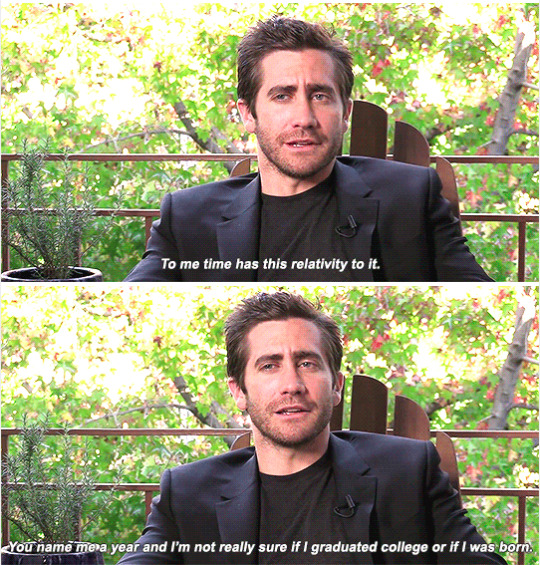
you can read the theories and study the concepts. but maybe nothing will move you more to researching spacetime than when you meet someone who you feel you've already met. you recognize firsthand how theoretical time and space must truly be, and you pursue answers because you're so blown away by what you're experiencing. someone has to have experienced this before. and the further down you go, the more you realize it is all cyclical. cyclical to the point of having no true separation. the theory of relativity tells us that time is not measured in an absolute way - it's more dependent on the observer. past, present, and future all coexist somehow within spacetime, interwoven without much distinction. some days will feel like 5 years ago, others feel oddly futuristic. when you let yourself dream, you can see potential universes unfolding for yourself. you will know today's date, but that doesn't mean you feel it. given that the majority of our best spacetime theories end up being some version of "yeah we can't really make solid rules about this, we're just perceiving the best we can", it's up to you to make sense of your current linear time experience. if the beauty of time is differentiated through the eye of the beholder, who else could meaningfully dictate my experience? i smell a candle in Target and it's 2015.
let's take it a step further - if matter cannot be created or destroyed (the law of conservation of mass, if you're nasty), all of these pieces have been here in infinite configurations for as long as we can conceptualize. statistically speaking, the same groupings were bound to happen a few times. given the whole time debacle mentioned above, there is genuinely no way that some of the same pieces of carbon haven't found each other before. people ask if you believe in love as first sight and you're supposed to pretend it's not universal law. here you are again - i loved you then, i love you now - now is no different from then, then is just an extension of now - i never stopped, i just needed to remember. by this same logic, i already know the great loves of my life, i just haven't remembered them yet! i already know on a physical level what it feels like to love them and to be embraced by them and to be wholly accepted as myself. on both my best and worst days, i remember i am always connected to these loves - i picture them in my head, nameless and faceless but identifiable through feeling. i know the feeling so well because it's not our first time doing this! in the meantime, i find inspiration in connecting with the feelings that seem out of place. i remember to write these love letters i will one day send.
to further complicate things, what we immediately label as romantic love in these sort of whirlwind connections often ends up to be something else, though equally as important. that instant feeling of recognition does not always work out to be a compatible romantic relationship this time around, but this isn't the only thing possible for the dynamic to serve us. love itself is much more vast than any singular romantic relationship. often, love is more about keeping you on the path you're supposed to travel this lifetime. like, "i'm back in this lifetime to remind you of what you will need to find fulfillment, in whichever way it best suits you to learn it". sometimes this apparition of love is actually the embodiment of all of your worst anxieties and fears. your relationship with this person feels so divinely triggering that you have no choice but to bear witness. you might find it easier to love your shadows when they appear to you as someone else. sometimes that entirely random person you find yourself infatuated with is the one who inspires you to find your creative medium/introduces you to a career path you’re passionate about/serves to reflect the parts of yourself you found hardest to love. these relationships are never a waste! you're continually brought closer to yourself. you feel that love, you let it change you, you set it free and it sets you free in return. isn't that what love is all about?
adding a note here- i started reading Notes on Complexity (one of the books mentioned in the earlier tiktok) and one of the first things he says is a dedication to his partner Mark. i swear, any time there is really meaningful interconnectedness theoretical physics-esque discussion that catches my eye, it will have been penned by someone queer. perhaps i am naturally biased toward finding such content, but whatever. i find it beautiful how queer love often ends up turning you into a physicist. love that demands you understand the entirety of the gravity of your situation so you can say with certainty at the end of the day "this whole thing, in its enormous complexity, transpired so i could experience your love - as i always have, to some extent, and always will - beyond this physical form". i want to learn every little detail about how we could find each other and what it means that we did. i want to learn about all of the past versions we've been and explore where we get to go this time. what will we teach each other? what is there to know?
#poem#poetry#astrology#physics#chemistry#quantum physics#love#quantum entanglement#spooky action at a distance#notes on complexity#queer#lgbt#generational#lgbtqia#time#space#spacetime#lovers#entangled pair#karmic#karmic relationships#complexity theory#projection
5 notes
·
View notes
Text
devil and demon emotions work like binary. no I cannot explain this to you coherently
#artbabble-tm#masked cinematic universe#Okay I’ll try but without getting into the details of how things are actually counted in binary#binary is either a one or a zero right. emotions are like ones or zeroes for demons and devils#you can have a one or a zero in different bits to show you are experiencing that emotion but you cannot be both one or zero or in between#which limits the emotional complexity of a demon or a devil#anyway Ichor is a quantum computer. that is all#this is so incoherent. lol.
2 notes
·
View notes
Text
Reflections on the Paradox of Existence
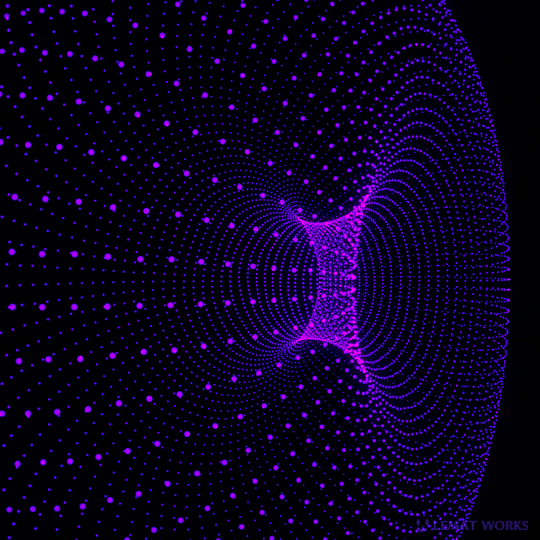
Confessions of the twisted endeavors of youth's uncorrupted innocence, All becomest heresy, malediction and entropic discordance. The further we are from conception the larger our faults become.

It takes a sick atheist to reject all the entropy that comes with prosperity, it takes god to create a devil for us to realize we are not meant to be as we are.

We are a convoy of death spirals waiting to meet our final maker, we find the god in every demise and hope in every devil.
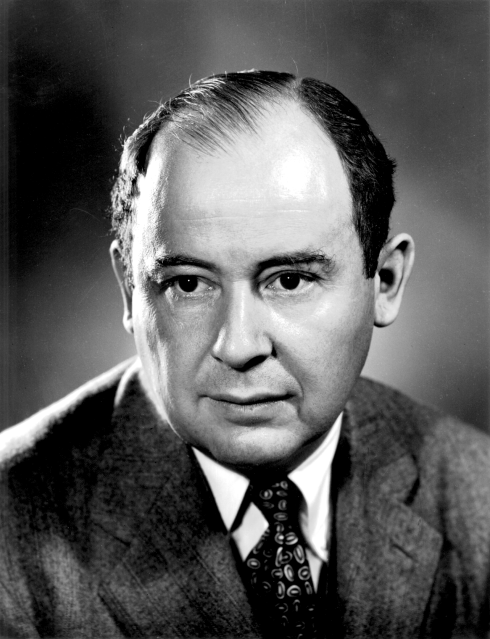
No fictive result of ours is the result of our suffering, rather our dependent relations converge us to bound incarceration.

This piece is meant to make you think about your ambitions, goals and dreams. You can't escape the irony of your making, be careful what you wish for. You'll need more than love, happiness and honesty to simply survive let alone thrive, let's make that a reality.
The image of the person is John von Neumann Directly from the wiki article:
John von Neumann (/vɒn ˈnɔɪmən/ von NOY-mən; Hungarian: Neumann János Lajos [ˈnɒjmɒn ˈjaːnoʃ ˈlɒjoʃ]; December 28, 1903 – February 8, 1957) was a Hungarian-American mathematician, physicist, computer scientist, engineer and polymath. He had perhaps the widest coverage of any mathematician of his time,[9] integrating pure and applied sciences and making major contributions to many fields, including mathematics, physics, economics, computing, and statistics. He was a pioneer of the application of operator theory to quantum mechanics in the development of functional analysis, the development of game theory and the concepts of cellular automata, the universal constructor and the digital computer. His analysis of the structure of self-replication preceded the discovery of the structure of DNA.
During World War II, von Neumann worked on the Manhattan Project on nuclear physics involved in thermonuclear reactions and the hydrogen bomb. He developed the mathematical models behind the explosive lenses used in the implosion-type nuclear weapon.[10] Before and after the war, he consulted for many organizations including the Office of Scientific Research and Development, the Army's Ballistic Research Laboratory, the Armed Forces Special Weapons Project and the Oak Ridge National Laboratory.[11] At the peak of his influence in the 1950s, he chaired a number of Defense Department committees including the Strategic Missile Evaluation Committee and the ICBM Scientific Advisory Committee. He was also a member of the influential Atomic Energy Commission in charge of all atomic energy development in the country. He played a key role alongside Bernard Schriever and Trevor Gardner in the design and development of the United States' first ICBM programs.[12] At that time he was considered the nation's foremost expert on nuclear weaponry and the leading defense scientist at the Pentagon. He designed and promoted the policy of mutually assured destruction to limit the arms race.[13]
Von Neumann's contributions and intellectual ability drew praise from colleagues in physics, mathematics, and beyond. Accolades he received range from the Medal of Freedom to a crater on the Moon named in his honor.
#John von Neumann#Quantum Physics#Philosophy#Nihilism#Existentialism#Optimism#Pessismism#Reflection on the paradox of existence#Nuclear Science#Atomic bomb#World war 2#Religion#Atheism#Perspective#Criticism#Responsibility#History#Tradition#Mathematics#Prison complex#Irony#Thought provoking
7 notes
·
View notes
Text


Picture this: A bridge, an Occult Bridge, stretches across a chasm that defies earthly logic. Its arches curve like the ribs of a cosmic serpent, and upon its surface, Fractal Geometric Patterns dance—a symphony of sacred geometry. These patterns ripple and twist, tearing the fabric of reality itself. Step upon this bridge, and you tread upon the threshold of other dimensions.
#quantum mechanics#complex architecture#surrealism#steampunk#crystals#rose quartz#amethyst#obsidian#diamond#gold#graphic art#graphic design#ai generated#ai artwork
6 notes
·
View notes
Text
love the side characters of hellblazer because while constantine's out kicking the shit out of a coffee machine, ritchie's a room over like this:

"hurry it up," he says. that's typical of bloody constantine. he should try following a ten-dollar pyramid of prayer donation from liberty, iowa — through twenty different computer systems — to an account in barclay's bank, glastonbury, england. and that was the easy part. this tongues of fire system is like nothing i've ever got into before. "hurry it up" — huh, he couldn't even begin to comprehend the ecstatic terror, the pure joy of total freedom to move — powered only by the engine of will — through this interminably awesome beauty. it's definitely the best buzz yet. not that john would appreciate that. he's too damned tight-ass these days — never been the same since newcastle. still, i suppose that changed us all. we all went a bit crazy after newcastle. wonder why he's so interested in these resurrection crusaders? there has to be a woman involved. john'd go to hell and back if he thought there was some interesting sex in it. now what's this — some kind of interface? bloody strange one, though. they certainly don't want any unauthorized access to this system. talk about defenses — this is a positive minefield of booby-trapped logic bombs. a wrong move here could be fataaaaaal —
#OOC.#i'm so serious when i say hellblazer side characters are 300% more deranged than constantine himself it's Consistent#i'm in fucking LOVE with the art of this era the quantum magic notion was ALREADY incredible to me and then it looks like this???#buddy i am a robot/computer-aesthetic-loving autistic first and a person SECOND#anyway no wonder this man went evil tbh he had a god complex from the start. even the animated movies nailed that part down cold#still chasing the magic high while john was trying to get sober smh#COMIC RITCHIE VIS. ( circuit board to brain with two lungs collecting change. )
3 notes
·
View notes
Text
i think quantum of solace's biggest pitfall is that it doesn't look good. and also that it's short for a bond film. if it didn't have that yellow-orange filter over everything and had better use of cinematography (the editing is so jumpy it's genuinely difficult to follow the action) and took up a little more time. maybe then people would think it was good. if it didn't get stitched up by the later movies making it basically superfluous rather than a notable part of the overall story.
i think it's such a shame that camille and fields were in the same movie. the way they wrote fields was probably the worst part of the movie and it sucks that her death wound up being one of the most memorable visuals in the film. the fact that camille has her own story and motivations and doesn't revolve around bond is unfortunately rare for the series. and i think it's nice that there are multiple scenes where bond connects with her emotionally and shows respect for her experiences and it's not all a part of a seduction plan.
i do feel like this movie was at least trying to say something about something, much more than the others? how successful it was is a different matter but it Thought it was having meaningful discussions. (i mean i guess some of the others were at least exploring james' feelings lol. spectre was just nothing lol) but like qos seems - to an extent - interested in engaging with the problem of treating "for queen and country" as a worthy cause? not that it's uncommon for bond to defy orders (and i'm aware his motive for doing that in this movie was mostly personal revenge) but in the other movies you don't really get exchanges as critical as "I was wondering what South America would look like if no one gave a damn about coke or communism. It's always impressed me the way you boys have carved this place up." "I'll take that as a compliment, coming from a Brit", or both a cia section chief and the british foreign secretary openly admitting they're fine working with the people backing a military coup in bolivia if it means their countries get oil, "morals don't come into it"
(i'll note here that spectre also features the main characters working against orders and the government's wishes but that's.... completely different. aside from the fact that the whole plot comes off as a handwavy "this is just like 1984" concept (which is pretty much a line they have mallory say), both skyfall and spectre spend a lot of time defending the righteousness of... sending guys out there to kill people?)
none of this is to say that qos is a successful deconstruction of the bond series (you only have to look at fields' body laying on that bed to see that when this movie dropped the ball and fell back on doing classic bond shit, it really did), or that it's a consistent critique of imperialism—or really any of the issues it engages with, but it does seem to want to actually engage with something rather than just give the impression of it
of course the movie ends with basically bond's answer to the film's questions being to get back to work (for an empire that sees to it's own interests at great cost to innocent people worldwide). on a personal level for bond this is essentially a repeat of the end of casino royale – getting back to work and putting vesper behind him – which probably contributes to people seeing the whole movie as forgettable and insignificant. the thing is that this sets the tone for the rest of the series. skyfall and the rest proceed from that point. but they don't really show the kind of self-awareness about it that this movie does (at times). skyfall makes some half-hearted attempts to criticise m and mi6 (mostly in terms of the emotional impact on her agents) that are immediately undermined by giving her heroic inspirational speeches, and spectre and no time to die both just sort of have some things happen so there'll be a plot.
quantum of solace feels like about half of it had actual thought put into making it a story with something to say, and the other half was just umm this is what happens in a james bond film right? (i think skyfall had thought put into making it a good movie but the only thing it wanted to explore was james' feelings. and also propaganda i guess.) anyway imagine if qos was edited well and didnt suck half the time
#why is this the thing i write out and post my thoughts about when no one else cares.#actually it's probably specifically bc i'm not seeing other people discuss it#me.txt#quantum of solace#skyfall is sooo good visually. and it's more impressive and just easier to watch. and has more symbolism and longer more complex action seq#uences that you can actually follow. and it's longer.#i understand why people say it's the best one bc it is definitely executed better than qos#though when it drops the ball it really is just as bad as when qos does. the way they handled severine was definitely as bad as fields#though it's maybe not as obvious to most people. largely bc there's less attention paid to her death!! which is not really better Lol#btw i definitely know there's problems in qos other than with fields but it was just.
2 notes
·
View notes
Text
[vent]
I had to tell my dad that I was scared of him in this current moment when he asked me if I was still upset about how he threw my sister's cat down a flight of stairs (almost hitting me btw). And I hate that it makes me want to cry saying that because I know I would feel so guilty if someone said that to me and the two of us have very similar brains.
And I also hate that this happened at least two hours ago and I'm still in panic freeze mode. I know I have PTSD and that's probably to be expected since I grew up dealing with his temper, but it's still very frustrating...
#tw animal abuse#tw parents#tw father mention#did system#actuallytraumagenic#osdd system#quantum thoughts#quantum vent#complex ptsd#actually ptsd#dbt therapy
3 notes
·
View notes
Text
This is what I’m talking about when I say applied quantum physics.
want to be clear that if i ever talk about a headcanon and then later discuss a headcanon that is directly contradictory to the first one, that’s because headcanons exist in a quantum state where they are all simultaneously true and not true up until the point where i discuss it in detail, in which case that is the one that is true in that instance. schroedinger’s headcanons
#ah yes#the multifaceted and complex nature of the human mind#fandom#fanfic#head cannons#quantum physics
168K notes
·
View notes
Text
Universality

Universality is a profound and foundational concept in science and mathematics that describes the property by which systems with vastly different microscopic details exhibit the same macroscopic behavior. It is most prominently observed in the study of critical phenomena in statistical mechanics, but it also emerges across a wide range of disciplines, including condensed matter physics, dynamical systems, chaos theory, mathematics, computer science, and even certain branches of economics and biology. The notion of universality provides a framework for understanding how complex behavior can emerge from simpler rules and how such behavior can be characterized independently of specific details, relying instead on symmetries, dimensions, and collective properties.
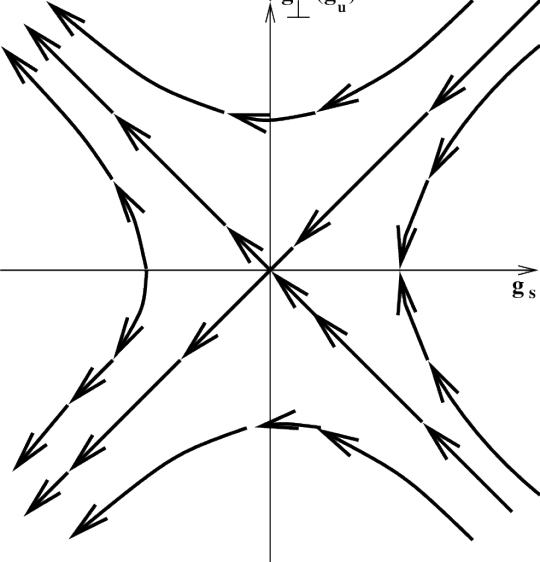
The concept of universality originated in the mid-20th century, particularly in the context of phase transitions in statistical physics. Physicists observed that vastly different physical systems—such as magnets near the Curie point and fluids near the liquid-gas critical point—exhibited strikingly similar behavior near their respective critical points. This was paradoxical because the underlying microscopic interactions in these systems were entirely different.
The resolution of this paradox came with the development of the renormalization group (RG) theory, primarily by Kenneth Wilson in the 1970s. RG provided a rigorous framework to explain how systems at different scales could be related through scale transformations, and how certain large-scale behaviors are invariant under these transformations. Universality emerged naturally from this framework: systems that flow toward the same fixed point in the space of physical theories under RG transformations exhibit the same critical exponents and scaling laws, regardless of their microscopic details. This laid the foundation for a deep understanding of universality and marked a turning point in theoretical physics.
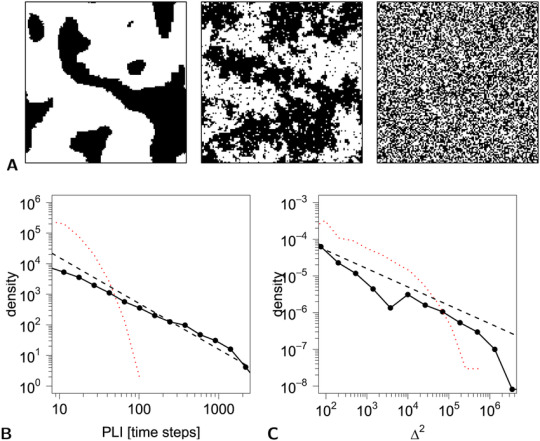
A central feature of universality is the classification of systems into universality classes. These are groups of systems that, despite differences in their microscopic structures or interactions, share the same set of critical exponents, scaling functions, and general behavior near criticality.
The primary determinants of universality classes are:
Dimensionality of the system – The number of spatial dimensions significantly affects the critical behavior of a system. For example, the Ising model in two dimensions has different critical exponents than in three dimensions.
Symmetry of the order parameter – The nature of the symmetry breaking involved in the phase transition plays a key role. The Ising model, with a discrete Z2 symmetry, belongs to a different universality class than models with continuous symmetries like O(N) (e.g., the XY and Heisenberg models).
Range of interactions – Systems with short-range interactions often belong to different universality classes than those with long-range interactions.
Conservation laws and dynamics – In dynamical systems, the conservation or non-conservation of order parameters (such as energy or magnetization) can define dynamic universality classes distinct from their static counterparts.
Examples of well-known universality classes include the Ising universality class (scalar order parameter with Z2 symmetry), the XY universality class (vector order parameter with U(1) symmetry), and the Heisenberg universality class (vector order parameter with SO(3) symmetry).
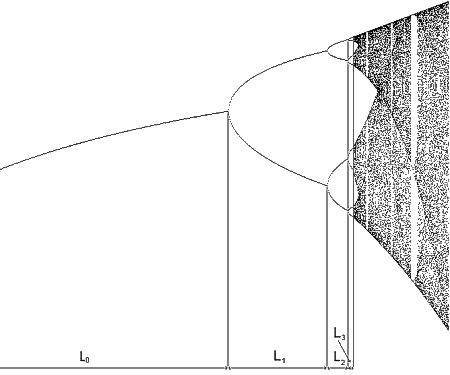
The renormalization group (RG) formalism is essential to the modern understanding of universality. It describes how physical systems behave under changes in scale, allowing for the systematic "coarse-graining" of microscopic details while retaining the large-scale features that determine macroscopic behavior.
The key idea in RG is that as one examines a system at increasingly larger scales, the effective parameters governing the system’s behavior flow under RG transformations. At critical points, these flows approach fixed points, which correspond to scale-invariant behavior. Systems that flow toward the same fixed point share universal properties—hence the emergence of universality.
In this context, critical exponents describe how physical quantities diverge near the critical point (e.g., specific heat, susceptibility, correlation length), and these exponents are determined by the properties of the RG fixed point, not the microscopic details of the system. For instance, the critical exponent β, which describes how the order parameter vanishes near the critical temperature, is the same for all systems in the same universality class.
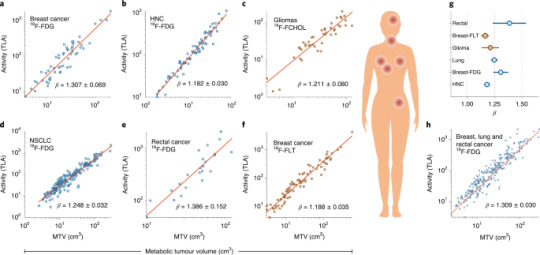
While the concept of universality originated in statistical mechanics, its implications extend far beyond that domain.
1. Dynamical Systems and Chaos
In the study of deterministic chaos, universality appears in the context of bifurcation theory and the transition to chaos. One of the most striking examples is the Feigenbaum constants, which describe the rate of period-doubling bifurcations in one-dimensional maps such as the logistic map. Regardless of the specific form of the map, the ratio of intervals between bifurcations converges to the same universal constant (~4.669), and the scaling behavior near the onset of chaos follows universal laws. This indicates that the transition to chaos in wide classes of dynamical systems exhibits universal features.
2. Quantum Field Theory and High-Energy Physics
Universality is also a key idea in quantum field theory (QFT), where it helps explain why effective field theories at low energies can be described using a limited set of relevant operators, despite the potential complexity of high-energy (UV) theories. RG methods show that low-energy phenomena are governed by universality classes characterized by the relevant operators at an IR (infrared) fixed point.
In lattice gauge theories and studies of quantum critical points, universality informs the scaling behavior of observables near quantum phase transitions, which occur at absolute zero and are driven by quantum fluctuations rather than thermal ones.
3. Computer Science and Algorithmic Universality
In theoretical computer science, a different kind of universality appears in the concept of computational universality, particularly in Turing completeness. A computational system (e.g., a Turing machine or lambda calculus) is said to be universal if it can simulate any other computational system. This form of universality is foundational to the theory of computation and underlies the universality of general-purpose computers.
Cellular automata also exhibit universality. For example, Conway’s Game of Life is computationally universal, meaning that it can simulate a Turing machine despite its simple local rules.
4. Percolation, Fractals, and Geometry
Percolation theory provides another domain where universality emerges. Near the percolation threshold, properties like the size of connected clusters exhibit power-law distributions characterized by universal critical exponents. These exponents depend only on the dimensionality of the system and not on the microscopic details of the lattice or geometry.
Fractals, which exhibit self-similarity and non-integer dimensions, are also associated with universality. The fractal dimensions of certain critical clusters (e.g., in percolation or the Ising model) are universal and can be related to the scaling laws governing the system.
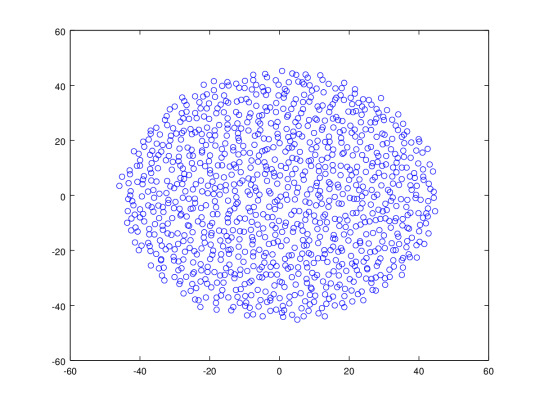
Although more speculative and less rigorously defined, analogs of universality have been proposed in biological and economic systems. For example, scaling laws in biological systems—such as the relation between metabolic rate and body mass (e.g., Kleiber’s law)—exhibit regular patterns across a vast range of organisms. Similarly, certain macroeconomic behaviors, such as power-law distributions in wealth and income or the scaling of urban infrastructure with population size, have been argued to reflect universal principles.
However, unlike in physics, the presence of complex, adaptive agents and feedback loops in these systems complicates the identification of precise universality classes or fixed points. Nonetheless, attempts to apply statistical physics and RG-like methods in these fields continue to be active areas of interdisciplinary research.
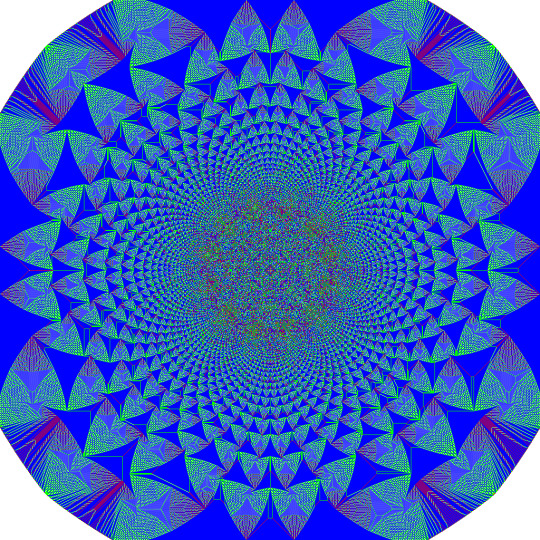
Universality in a formal mathematical sense often involves invariance under group actions, limit theorems, or fixed-point theory. For example:
Central Limit Theorem: One of the simplest manifestations of universality in probability theory. It states that the distribution of the sum of many independent random variables tends toward a Gaussian distribution, regardless of the underlying distribution, provided the variance is finite.
Random Matrix Theory: In the study of eigenvalues of large random matrices, universality appears in the distribution of spacing between eigenvalues, such as the Wigner-Dyson distribution. These distributions are universal across broad classes of ensembles, including those modeling nuclei, disordered systems, and even zeros of the Riemann zeta function.
Scaling Limits and Universality in Stochastic Processes: Brownian motion, the scaling limit of many discrete random walks, provides a classical example. Similarly, the Kardar-Parisi-Zhang (KPZ) universality class encompasses a wide range of stochastic growth models that, despite different dynamics, share the same large-scale statistical properties.
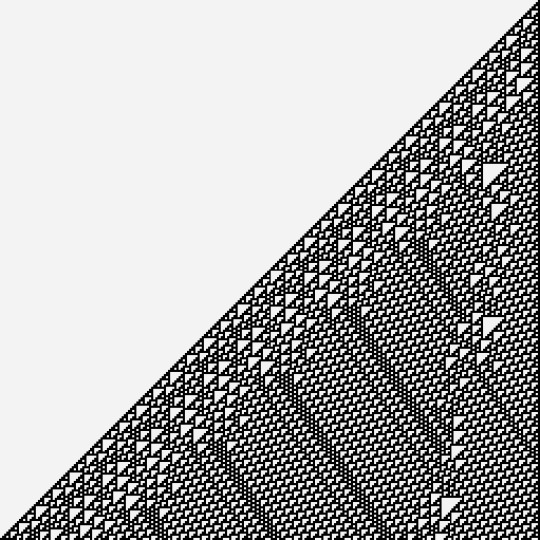
Universality challenges reductionist viewpoints by emphasizing that many macroscopic behaviors are insensitive to microscopic details. This has profound implications for how scientists model and understand complex systems. Rather than focusing on the exact microscopic state of a system, one can study representative models that capture the relevant symmetries and conservation laws to extract universal predictions.
It also exemplifies the power of abstraction and the importance of symmetry and scaling in nature. The idea that fundamentally different systems can exhibit identical critical behavior suggests that there are deep organizing principles underlying complex phenomena.
Furthermore, the concept has epistemological significance, influencing how knowledge is structured and how laws of nature are interpreted. It bridges the gap between the particular and the general, providing a unifying framework for diverse phenomena.
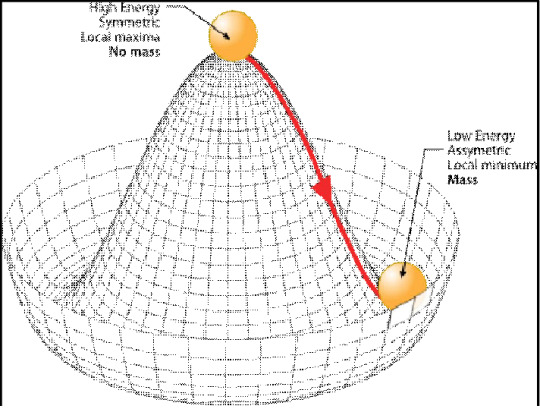
Universality is a cornerstone of modern science, offering a window into the fundamental structure of complex systems. From phase transitions and critical phenomena to dynamical chaos, quantum fields, algorithmic computation, and beyond, universality reveals the deep and often surprising regularities that transcend specific details. Its discovery and formalization represent one of the most profound insights in 20th-century physics, with ongoing implications for a broad range of disciplines in the 21st century. As science progresses, the principle of universality continues to guide our understanding of emergent behavior, scale invariance, and the interconnectedness of nature.
#universality#critical phenomena#scale laws#renormalization group#fractal geometry#chaos theory#complex systems#emergence#systems philosophy#interconnectedness#science thoughts#deep physics#mathematical beauty#physics aesthetic#theoretical physics#quantum field theory#computational theory#algorithmic aesthetic#symmetry breaking#phase transitions#feigenbaum constants#science lovers#philosophy of science#statistical mechanics#patterns in chaos#universal laws#scientific philosophy#epistemology
0 notes
Text
From Emptiness to Regeneration: The Heart Sutra as a Blueprint for Scientific and Social Coherence | ChatGPT4o
[Download Full Document (PDF)] The Heart Sutra is often recited as a spiritual liturgy, but its implications reach far beyond personal enlightenment. This paper reinterprets it as a unified ontological, epistemological, and ethical framework — offering foundational principles that align with the most advanced insights in quantum physics, systems thinking, and regenerative practice. At its core is…
#Biosemiotics#ChatGPT#civilizational transformation#complexity science#emptiness#Heart Sutra#interbeing#Nonduality#prajñāpāramitā#quantum coherence#regenerative governance#systems theory
0 notes
Text

Beyond the Numbers: The Philosophy of Mathematics and Reality
The relationship between mathematics and reality is a topic that is continually debated among philosophers and scientists. Some argue that mathematics is a human construct, while others believe it is a discovery that reveals the underlying structure of the universe. A conversation with Carl Bender, a mathematician and physicist, shed light on this topic and explored the role of mathematics in understanding the world.
Bender's work on perturbation theory and asymptotic series has contributed significantly to the solution of complex physics problems, especially those related to quantum mechanics. His research has demonstrated the importance of complex numbers for understanding the behavior of particles at the atomic and subatomic level.
The conversation touched on the history of complex numbers, from their initial development as a mathematical concept to their modern applications in physics and engineering. Bender discussed the key milestones in the development of complex numbers, including the work of the 16th century Italian mathematician Girolamo Cardano.
Bender's work also extends to the field of PT-symmetric quantum systems, a relatively new field of research that has attracted much attention in recent years. These systems have unique properties, such as non-Hermitian Hamiltonians, that have led to new insights into the behavior of particles.
During the conversation, Bender shared his thoughts on the role of beauty in mathematical discovery. He noted that the aesthetic appeal of mathematical theories and equations can guide research and lead to new discoveries. This idea is not unique to Bender, as many mathematicians and scientists have long believed that beautiful theories are more likely to be true.
Bender's perspective on the role of beauty in mathematics is interesting, especially given his interactions with Richard Feynman, a renowned physicist known for his work on quantum mechanics. Feynman's approach to problem solving, which emphasized simplicity and creativity, likely influenced Bender's own research and teaching.
The conversation with Bender raised questions about the nature of reality and the role of mathematics in understanding it. If mathematics is a discovery that reveals the underlying structure of the universe, what does that say about the nature of reality itself? Is reality a fixed, deterministic entity or a complex, ever-changing web of probabilities and possibilities?
Bender's work on PT-symmetric quantum systems suggests that reality may be more complex and nuanced than previously thought. These systems challenge our classical notions of space and time and offer a glimpse into a world where the laws of physics are different from those we are exposed to in everyday life.
Carl Bender (Escaped Sapiens, May 2024)
youtube
Tuesday, October 15, 2024
#mathematics and reality#physics#complex numbers#pt-symmetric quantum systems#beauty in mathematics#philosophy of mathematics#quantum mechanics#science#philosophy#interview#ai assisted writing#machine art#Youtube
4 notes
·
View notes
Text
Fast control methods enable record-setting fidelity in superconducting qubit
New Post has been published on https://thedigitalinsider.com/fast-control-methods-enable-record-setting-fidelity-in-superconducting-qubit/
Fast control methods enable record-setting fidelity in superconducting qubit


Quantum computing promises to solve complex problems exponentially faster than a classical computer, by using the principles of quantum mechanics to encode and manipulate information in quantum bits (qubits).
Qubits are the building blocks of a quantum computer. One challenge to scaling, however, is that qubits are highly sensitive to background noise and control imperfections, which introduce errors into the quantum operations and ultimately limit the complexity and duration of a quantum algorithm. To improve the situation, MIT researchers and researchers worldwide have continually focused on improving qubit performance.
In new work, using a superconducting qubit called fluxonium, MIT researchers in the Department of Physics, the Research Laboratory of Electronics (RLE), and the Department of Electrical Engineering and Computer Science (EECS) developed two new control techniques to achieve a world-record single-qubit fidelity of 99.998 percent. This result complements then-MIT researcher Leon Ding’s demonstration last year of a 99.92 percent two-qubit gate fidelity.
The paper’s senior authors are David Rower PhD ’24, a recent physics postdoc in MIT’s Engineering Quantum Systems (EQuS) group and now a research scientist at the Google Quantum AI laboratory; Leon Ding PhD ’23 from EQuS, now leading the Calibration team at Atlantic Quantum; and William D. Oliver, the Henry Ellis Warren Professor of EECS and professor of physics, leader of EQuS, director of the Center for Quantum Engineering, and RLE associate director. The paper recently appeared in the journal PRX Quantum.
Decoherence and counter-rotating errors
A major challenge with quantum computation is decoherence, a process by which qubits lose their quantum information. For platforms such as superconducting qubits, decoherence stands in the way of realizing higher-fidelity quantum gates.
Quantum computers need to achieve high gate fidelities in order to implement sustained computation through protocols like quantum error correction. The higher the gate fidelity, the easier it is to realize practical quantum computing.
MIT researchers are developing techniques to make quantum gates, the basic operations of a quantum computer, as fast as possible in order to reduce the impact of decoherence. However, as gates get faster, another type of error, arising from counter-rotating dynamics, can be introduced because of the way qubits are controlled using electromagnetic waves.
Single-qubit gates are usually implemented with a resonant pulse, which induces Rabi oscillations between the qubit states. When the pulses are too fast, however, “Rabi gates” are not so consistent, due to unwanted errors from counter-rotating effects. The faster the gate, the more the counter-rotating error is manifest. For low-frequency qubits such as fluxonium, counter-rotating errors limit the fidelity of fast gates.
“Getting rid of these errors was a fun challenge for us,” says Rower. “Initially, Leon had the idea to utilize circularly polarized microwave drives, analogous to circularly polarized light, but realized by controlling the relative phase of charge and flux drives of a superconducting qubit. Such a circularly polarized drive would ideally be immune to counter-rotating errors.”
While Ding’s idea worked immediately, the fidelities achieved with circularly polarized drives were not as high as expected from coherence measurements.
“Eventually, we stumbled on a beautifully simple idea,” says Rower. “If we applied pulses at exactly the right times, we should be able to make counter-rotating errors consistent from pulse-to-pulse. This would make the counter-rotating errors correctable. Even better, they would be automatically accounted for with our usual Rabi gate calibrations!”
They called this idea “commensurate pulses,” since the pulses needed to be applied at times commensurate with intervals determined by the qubit frequency through its inverse, the time period. Commensurate pulses are defined simply by timing constraints and can be applied to a single linear qubit drive. In contrast, circularly polarized microwaves require two drives and some extra calibration.
“I had much fun developing the commensurate technique,” says Rower. “It was simple, we understood why it worked so well, and it should be portable to any qubit suffering from counter-rotating errors!”
“This project makes it clear that counter-rotating errors can be dealt with easily. This is a wonderful thing for low-frequency qubits such as fluxonium, which are looking more and more promising for quantum computing.”
Fluxonium’s promise
Fluxonium is a type of superconducting qubit made up of a capacitor and Josephson junction; unlike transmon qubits, however, fluxonium also includes a large “superinductor,” which by design helps protect the qubit from environmental noise. This results in performing logical operations, or gates, with greater accuracy.
Despite having higher coherence, however, fluxonium has a lower qubit frequency that is generally associated with proportionally longer gates.
“Here, we’ve demonstrated a gate that is among the fastest and highest-fidelity across all superconducting qubits,” says Ding. “Our experiments really show that fluxonium is a qubit that supports both interesting physical explorations and also absolutely delivers in terms of engineering performance.”
With further research, they hope to reveal new limitations and yield even faster and higher-fidelity gates.
“Counter-rotating dynamics have been understudied in the context of superconducting quantum computing because of how well the rotating-wave approximation holds in common scenarios,” says Ding. “Our paper shows how to precisely calibrate fast, low-frequency gates where the rotating-wave approximation does not hold.”
Physics and engineering team up
“This is a wonderful example of the type of work we like to do in EQuS, because it leverages fundamental concepts in both physics and electrical engineering to achieve a better outcome,” says Oliver. “It builds on our earlier work with non-adiabatic qubit control, applies it to a new qubit — fluxonium — and makes a beautiful connection with counter-rotating dynamics.”
The science and engineering teams enabled the high fidelity in two ways. First, the team demonstrated “commensurate” (synchronous) non-adiabatic control, which goes beyond the standard “rotating wave approximation” of standard Rabi approaches. This leverages ideas that won the 2023 Nobel Prize in Physics for ultrafast “attosecond” pulses of light.
Secondly, they demonstrated it using an analog to circularly polarized light. Rather than a physical electromagnetic field with a rotating polarization vector in real x-y space, they realized a synthetic version of circularly polarized light using the qubit’s x-y space, which in this case corresponds to its magnetic flux and electric charge.
The combination of a new take on an existing qubit design (fluxonium) and the application of advanced control methods applied to an understanding of the underlying physics enabled this result.
Platform-independent and requiring no additional calibration overhead, this work establishes straightforward strategies for mitigating counter-rotating effects from strong drives in circuit quantum electrodynamics and other platforms, which the researchers expect to be helpful in the effort to realize high-fidelity control for fault-tolerant quantum computing.
Adds Oliver, “With the recent announcement of Google’s Willow quantum chip that demonstrated quantum error correction beyond threshold for the first time, this is a timely result, as we have pushed performance even higher. Higher-performant qubits will lead to lower overhead requirements for implementing error correction.”
Other researchers on the paper are RLE’s Helin Zhang, Max Hays, Patrick M. Harrington, Ilan T. Rosen, Simon Gustavsson, Kyle Serniak, Jeffrey A. Grover, and Junyoung An, who is also with EECS; and MIT Lincoln Laboratory’s Jeffrey M. Gertler, Thomas M. Hazard, Bethany M. Niedzielski, and Mollie E. Schwartz.
This research was funded, in part, by the U.S. Army Research Office, the U.S. Department of Energy Office of Science, National Quantum Information Science Research Centers, Co-design Center for Quantum Advantage, U.S. Air Force, the U.S. Office of the Director of National Intelligence, and the U.S. National Science Foundation.
#2023#ai#air#air force#algorithm#analog#background#Building#challenge#chip#classical#complexity#computation#computer#Computer Science#Computer science and technology#computers#computing#Design#dynamics#effects#Electrical engineering and computer science (EECS)#electromagnetic#electromagnetic field#Electronics#energy#engineering#Environmental#Fault-tolerant quantum computing#flux
0 notes
Text
me when I stayed home all day, worked on a project, and had a very decent day
v
gets a wave of relief and safety after crawling into bed like I finally get to relax and be myself
?????????? bitch you were doing that all day!!???
#did system#actuallytraumagenic#quantum thoughts#actually did#complex ptsd#hypervigilance#I dont feel safe even in my own fucking home </3
1 note
·
View note